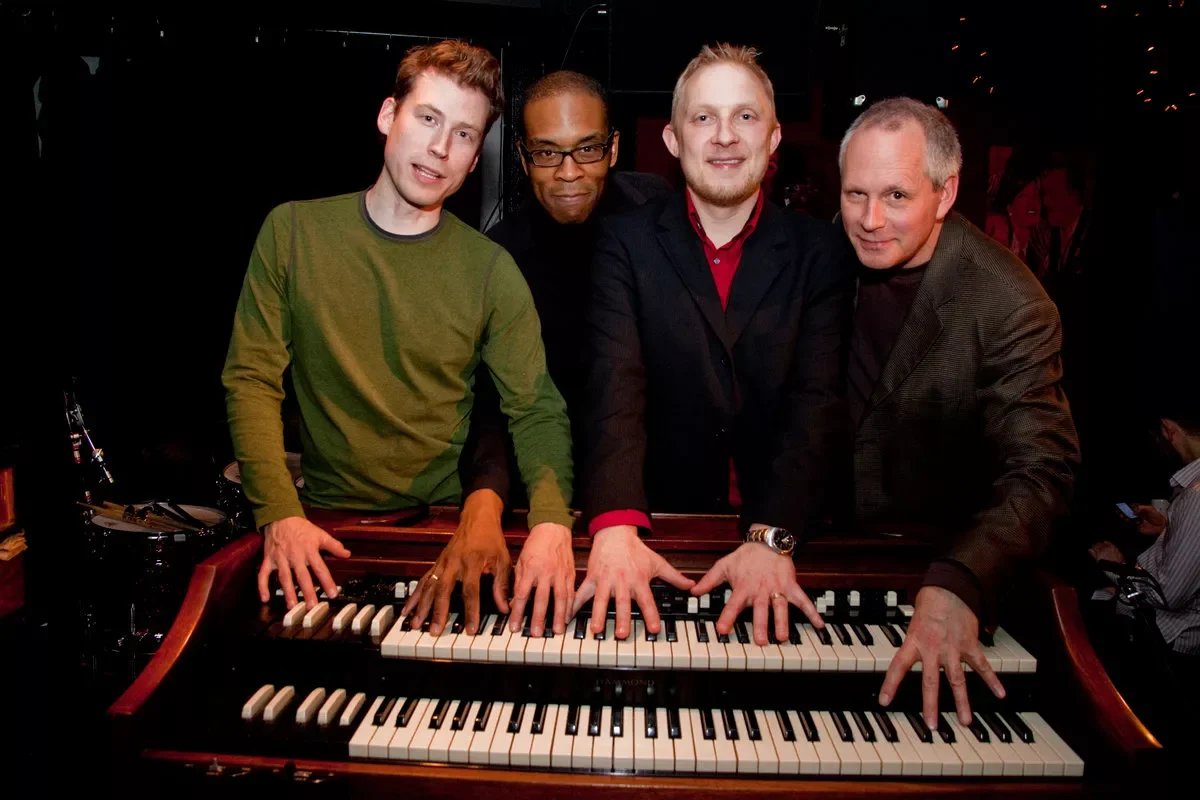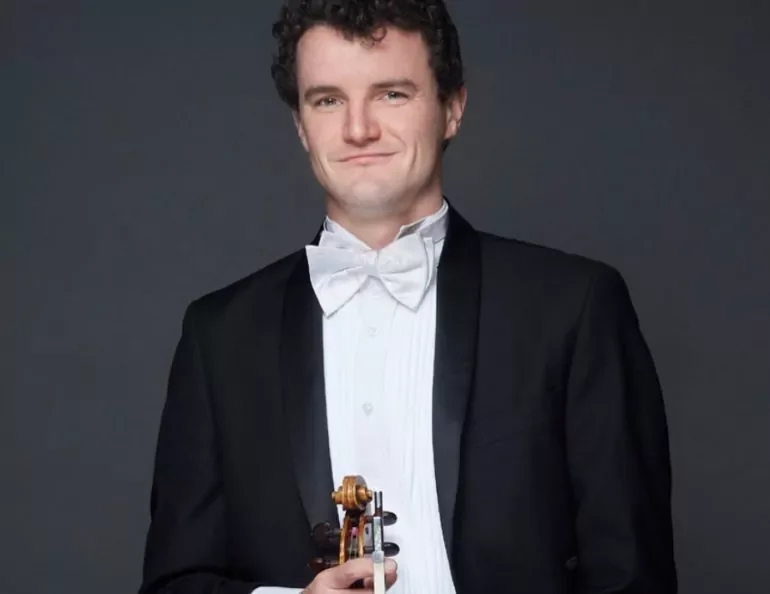Elation and swirling emotions as VSO holds its first live concert in 15 months at the Orpheum
Program of Martin and Strauss suited pulling-out-of-a-pandemic mood
The view from the balcony, where audience members sat safely distanced from the stage.
A HEARTY and authentically heart-felt “Welcome back!” was the refrain from ushers as audiences entered the Orpheum Theatre again for the first time in 15 months—though what tbey found inside was a little different than going to see the Vancouver Symphony Orchestra pre-pandemic.
Normally the historic venue’s lobby would be packed to its gilded rafters with people chatting over wine before the show. In what was a good indication of what live indoor performances will look like for the next while, carefully distanced visitors followed a roped-off pathway that led all the way to the balcony entrance. There, masked patrons lined up on stickers to wait for an usher to take them one-by-one to their seats. In the hall, 50 viewers were spread far apart—and sat well above the players on stage.
“After 15 months of musicians performing to an empty hall, welcome back to this first performance by Vancouver Symphony Orchestra,” associate conductor Andrew Crust said to cheers and clapping. “Even though there are 50 of you, it seems like 2,000.”
He added another emotional element to the performance: principal oboe player Roger Cole would be making his final performance before retiring, having served with the orchestra since 1976.
“I see him on the Seawall basking in the sun with his Bluetooth speakers and he’s usually listening to Bach,” Crust said. And with that in mind, the symphony members played Cole a moving musical present by the same composer. “It’s a reminder that music is a gift…Something we give to each other,” Crust said.
The spirit of a gift—one we might have once taken for granted—resonated throughout the concert by VSO members. That held especially true in the opening piece, in which Cole took part in a playful yet moody and challenging musical conversation with his fellow wind and string players. Twentieth-century Swiss composer Frank Martin’s Concerto for seven wind instruments, timpani, percussion and string orchestra seemed to capture all the mixed emotions of the last pandemic year—the highs, the lows, the shifts between the dark, the serene, the distracting, and the just plain surreal.
The cascading winds of the first movement gave way to swirling, dreamlike sounds. Crust and his string players found an almost impossibly soft volume and perfectly slow tempo in the haunting second, sometimes interrupted by a plaintive clarinet, or the warbling of a flute. All along, the timpani punctuated the conversation, suggesting something deeper and more resonant.
This was not a showy piece to welcome back audiences, but rather something that captured the subtleties and all the “feels” of this moment in time.
The music built to a finale that felt like a release of the pent-up energy of this year—at the same time, a grand sendoff for Cole.
It was nice to see wind instruments take the fore in the other half of this double bill, too: breath has been taboo in these airborne-virus times, and it was exhilarating to see it reclaimed by an unmasked (but distanced), virtuosic pair of female artists—clarinetist Jenny Jonquil and bassoonist Julia Lockhart—to create something fantastical.
Again, you couldn’t escape the feeling that the piece captured something essential but intangible about the past year. Richard Strauss wrote the Duet Concertino for clarinet and bassoon, with string orchestra and harp as an interpretation of Beauty and the Beast—the flowing clarinet and strings met with the arrival of the bassoon’s “bear”. But Strauss also composed the piece in the wake of the destruction of World War II, and there was something that spoke to a divided planet dealing with an unexpected “beast”, and pulling itself out of a pandemic, too.
Jonquil brought full expressive power to the extended, graceful clarinet solo that opens the work, and it was a thrill to watch Lockhart manoeuvring her bassoon like a dance partner, showing the instrument’s nuance and the sense of character the piece demands.
Though their audience was small and spread out, the VSO musicians seemed to draw a new kind of energy from having live viewers--something they have been deprived of for long months. For those of us watching, the rush was a little like what you might have felt finally getting your vaccine--only, obviously, far more enjoyable: here was palpable proof that the world is opening up again. An ending and a beginning, and all the feels that go along with that.













